


A Tiny Cup Of Culinary Alchemy

In the world of coffee, the espresso shot is the ultimate manifestation of the brewer's art. It's a symphony of flavors and aromas condensed into a tiny, concentrated cup of liquid gold, celebrated by aficionados and cherished by caffeine enthusiasts. This diminutive beverage, though small in size, holds a world of complexity and history within its dark and robust depths.
The Birth Of Espresso: A Brief History
The origins of espresso date back to 19th-century Italy when Angelo Moriondo patented the first espresso machine in Turin. Espresso, which means "pressed out" or "express" in Italian, refers to the quick preparation of this highly concentrated coffee. It wasn't until the early 20th century that espresso became widely popular, with the introduction of the first espresso machines in coffee shops.
The Art Of Espresso Brewing
Brewing the perfect espresso shot is an art that combines precise science and skillful craftsmanship. Several elements must come together harmoniously to create this iconic beverage:
Coffee Beans: The choice of coffee beans is the first crucial step. High-quality beans, often a blend of Arabica and Robusta, are meticulously selected for their flavor profiles. These beans are typically roasted to perfection, ensuring a balance of sweetness, acidity, and bitterness.
Grind Size: The grind size must be tailored to the specific espresso machine. A fine grind is essential for espresso preparation, allowing for optimal extraction.
Water Temperature: The water used for brewing should be at the ideal temperature, usually between 195°F and 205°F (90°C to 96°C), to extract the full spectrum of flavors from the coffee.
Brewing Time: The brewing time is typically around 25-30 seconds, during which hot pressurized water is forced through the coffee grounds. This process ensures that the flavors are extracted efficiently, resulting in a rich and concentrated shot.
Pressure: Espresso machines exert high pressure, usually between 9 and 15 bars, to push the water through the coffee grounds. This pressure aids in the extraction of aromatic oils and compounds, forming the signature crema on top of the shot.
The Crema: The crema, a creamy, golden layer that tops the espresso shot, is a visual indicator of a well-prepared shot. It is a mixture of oils and carbon dioxide produced during the brewing process, contributing to the shot's aroma and taste.
The Espresso Experience
An espresso shot is a full-bodied, intense, and complex beverage. The flavor can range from nutty and chocolatey to fruity and floral, depending on the beans and the brewing method. The aroma is a mesmerizing blend of roasted coffee, flowers, and spices, encapsulated in a tiny cup.
In many cultures, an espresso shot is more than just a caffeinated pick-me-up. It's a moment to pause, to savor, and to socialize. In Italy, for instance, the act of enjoying an espresso is a daily ritual that brings people together in cafes, where they chat, argue, and find a moment of respite in a hectic world.
The espresso shot is more than just a concentrated coffee beverage; it's a testament to the art of brewing. From the meticulous selection of beans to the precise brewing process and the celebration of its unique flavors, the espresso shot embodies the spirit of craftsmanship and the enduring love for coffee in a tiny cup. For coffee connoisseurs, it's a lifelong pursuit to find that elusive, perfect shot that captures the essence of this revered beverage.
The Unsung Hero Of Stress-Free Cooking
 2. Stress Reduction: A cluttered, dirty kitchen can contribute to stress and anxiety. Easy cleanup minimizes the chaos and promotes a sense of order and tranquility.
2. Stress Reduction: A cluttered, dirty kitchen can contribute to stress and anxiety. Easy cleanup minimizes the chaos and promotes a sense of order and tranquility.
3. Consistency: When cleanup is straightforward, you're more likely to cook at home more often. This promotes healthier eating habits and reduces reliance on takeout or dining out.
4. Culinary Exploration: The prospect of a time-consuming cleanup can deter people from trying new recipes and techniques. Easy cleanup encourages culinary exploration and experimentation.
5. Enhanced Creativity: A clean and organized kitchen can inspire creativity. You're more likely to try new ingredients and cooking methods when your workspace is free from clutter and mess.
Tips For An Easy Cleanup
Here are some practical tips to make your cleanup after cooking a stress-free experience:
Elevate Your Culinary Game With Clever Shortcuts
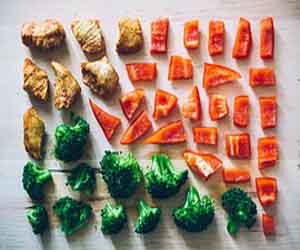 4. Efficiency: Cooking hacks streamline the cooking process, making it more efficient. They allow you to multitask, so you're not chained to the stove, and they minimize the number of pots and pans you need to wash.
4. Efficiency: Cooking hacks streamline the cooking process, making it more efficient. They allow you to multitask, so you're not chained to the stove, and they minimize the number of pots and pans you need to wash.
5. Creativity: Hacks encourage experimentation and creativity in the kitchen. They open up new possibilities and inspire you to try new techniques and flavors.

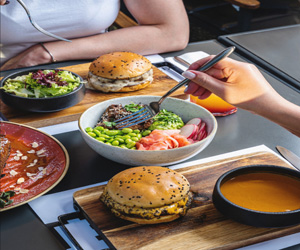



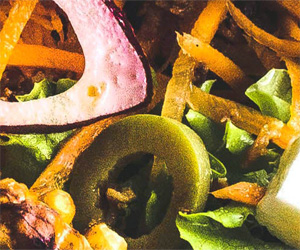
Culinary Treasures That Bind Generations
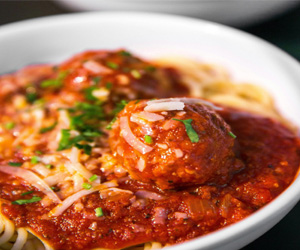
At the heart of beloved recipes lies the concept of familiarity and nostalgia. These are the dishes that have been prepared for generations, and their flavors hold a special place in the hearts of those who have savored them. From grandma's secret apple pie to the famous spaghetti sauce that's a closely guarded family tradition, these recipes bring a sense of comfort and warmth with every bite.
Beloved recipes often represent more than just culinary expertise; they are a reflection of cultural heritage. Passed down from ancestors who immigrated to new lands, these recipes carry with them the essence of a culture, preserving traditions, flavors, and culinary techniques that have been cherished for centuries. Whether it's the rich spices of Indian curry, the simplicity of Italian pasta, or the heartiness of Southern barbecue, beloved recipes offer a window into the world's diverse and vibrant cuisines.
From Novices To Seasoned Chefs
 For those new to the culinary world, there is an abundance of resources available to help you learn the basics. Cookbooks, online tutorials, and cooking classes are fantastic tools for building a strong foundation. These resources offer clear and concise instructions that empower novices to recreate delectable meals with ease and confidence.
For those new to the culinary world, there is an abundance of resources available to help you learn the basics. Cookbooks, online tutorials, and cooking classes are fantastic tools for building a strong foundation. These resources offer clear and concise instructions that empower novices to recreate delectable meals with ease and confidence.
Exploring New Horizons: As you gain confidence and experience in the kitchen, culinary expertise opens the door to endless possibilities. You can start experimenting with different ingredients, cooking techniques, and flavor combinations. Trying new recipes and exploring various cuisines becomes a source of joy and adventure. The thrill of creating something new and delicious becomes the driving force for many home cooks.
Healthy Eating And Nourishing Meals: Culinary expertise is not just about creating indulgent dishes. It's also about making informed choices for a healthier lifestyle. From scrumptious breakfast options to satisfying lunches and delightful dinners, a culinary journey can incorporate nutritious and wholesome recipes that enhance your well-being. This ensures that everyone can enjoy the benefits of cooking, from improved health to enhanced culinary skills.
Family And Loved Ones: Cooking is a universal language of love and care. Whether you are cooking for yourself, your family, or your friends, the ability to create delicious and nutritious meals brings people together. Sharing homemade dishes is a source of joy, bonding, and togetherness, making culinary expertise a gift that keeps on giving.
A Culinary Journey Through Your Backyard
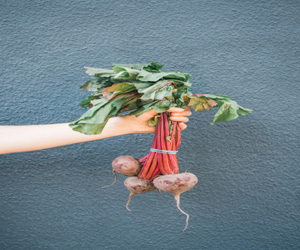 Flavorful Benefits:
Flavorful Benefits:
One of the most immediate and compelling benefits of homegrown flavors is the enhancement of taste. Here are a few reasons why homegrown produce tastes better:
Ripeness: Homegrown produce is harvested when it's perfectly ripe, ensuring that you experience the fullest, most vibrant flavors.
Nutrient Density: The time and care you invest in your homegrown produce can lead to higher nutrient content, contributing to more intense and wholesome flavors.
Variety: You have the freedom to choose a wide variety of fruits, vegetables, and herbs that may not be available at your local grocery store, diversifying your palate.
Unique Varietals: Experimenting with different heirloom or unusual plant varieties can lead to exceptional and distinctive flavors that are hard to find elsewhere.
A Sustainable Choice: Homegrown flavors align with the principles of sustainability and environmental responsibility. When you grow your own produce, you reduce your carbon footprint, as there are no transportation or packaging requirements. Additionally, you have the flexibility to practice organic and eco-friendly gardening, reducing the use of harmful chemicals and conserving resources.
 2. Cross-Contamination
2. Cross-Contamination
Cross-contamination is a constant concern for individuals with celiac disease. Even a small amount of gluten can trigger symptoms or damage the small intestine. To mitigate this risk, create a dedicated gluten-free area in your kitchen, use separate utensils and cookware, and be cautious when dining out. Communication is key when eating at restaurants; be sure to inform the staff of your dietary restrictions to prevent cross-contamination.
3. Social And Dining Challenges
Social situations and dining out can pose challenges for those on a gluten-free diet. Friends and family may not fully understand the dietary restrictions, which can make social gatherings awkward. The key is to communicate your dietary needs clearly, offer to bring gluten-free dishes, and seek out restaurants with gluten-free options. Many establishments are now catering to the gluten-free trend, making dining out more accessible.
4. Label Reading And Hidden Gluten
Understanding food labels and identifying hidden sources of gluten is vital. Gluten can hide in unexpected places, such as sauces, dressings, and seasonings. Familiarize yourself with label reading and look for certified gluten-free products. Also, consider downloading gluten-free apps or using online resources to verify the safety of specific brands and products.